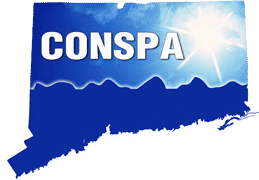As the temperatures dip, you pull your long johns out of storage, buy a new pair of gloves and have your fur-lined slippers at the ready. Winter is on its way.
Winterizing your New York or Connecticut pond and its plant life is one thing — but what about the fish that call that pond home? We get so many questions from Neave Aquatics customers about how to care for koi and other exotic pond fish during the cold winter months.
It’s a great question — the fish are so beautiful that it’s natural to want to baby them in the harshest conditions.
We’ve worked with hundreds of pond owners to winterize their ponds and care for their koi through cold weather! Here are six tips to ensure your koi will be healthy come spring.
What Happens To Fish During The Winter?
Fish shut down their non-essential systems once the water temperature hits about 45 degrees.
As the water cools, water that’s around 39 degrees will settle to the bottom of your pond. That’s where your fish will hang out, munching a bit of algae, living off stored fat and wishing for spring.
Koi can survive the ice, as long as your pond is deep enough (at least 3 to 5 feet) not to freeze completely. What gets them in trouble is the reduced oxygen and increased toxic gases caused when the water surface is sealed by ice.
Koi Care Tips
Keep Water Aerated
Have an aerator running in your pond at all times to keep the water stirred and promote the exchange of gases. An aerator is a lot more economical than a pond heater, and it will oxygenate the water while reducing ice build up.
Maintain Ventilation In Your Pond
You’ll need a small hole or two for the bubbles to escape. You don’t need to remove the rest of the ice from the pond surface.
Don’t Rock The Boat
Koi, and many other fish go into a sort of dormancy in the winter, using less oxygen and naturally settling to the bottom of the pond where the water is warmer.
Your aerator should gently stir the water without upsetting this natural balance.
Strive for a steady stream of bubbles, not a rolling “boil” or strong current. If your pond is 4 to 5 feet or deeper, put the diffuser at the middle of the depth range (not the deepest part) so that the fish can retreat to less-disturbed deeper waters if needed.
GENTLY Break Up Ice On Your Pond
If thick ice forms on the surface of your pond, don’t break it by hitting it. The force can cause shock waves that may hurt the fish. Keep an eye on your ventilation hole and remove any thin ice before it becomes thick and hard.
If necessary, you can sit a full, hot tea kettle on top of the ice until it melts a hole.
And don’t worry about snow: The snow, ice, and surrounding earth will help insulate your pond from the frigid air.
Add A Deicer
If your pond threatens to freeze completely, you may need to install a de-icer to keep at least part of the water above freezing. Your fish will need a few feet of liquid water in the pond throughout the winter.
Don’t Feed Koi During Winter
Fish are cold-blooded. When the water temperature drops, their digestion stops. If they eat, they’ll die.
Need Help Winterizing?
If you’re looking for more information on caring for koi during the cold winter months, the Midwest Pond and Koi Society, a nonprofit organization for passionate hobbyists, have plenty of free tips to keep everything running smoothly through whatever Mother Nature can throw at New York and Connecticut.
Need help winterizing your koi pond? Neave Aquatics has experts on hand who not only build customized fish ponds and select the fish but know how to tuck them in for the winter.
We offer fish pond maintenance services that can be scheduled on a routine or per-event basis depending on your needs.
During warm weather, the maintenance service can include inspection of all your fish pond systems, water cleaning and balancing, plant life pruning and control and repairs to any part of your fish pond that requires fixing.
If you’re in the Hudson Valley, call us at (845) 463-0592. If you’re in Westchester County, call (914) 271-7996; from Connecticut, dial (203) 212-4800. Or, fill out our simple web form, and we’ll contact you about setting up your free consultation.






















